
The natural habitats of our estuaries are often missing, especially in urban areas. For example, in the Thames Estuary only around 2% of the tidal banks are now natural in profile. The absence of the soft edges – where wildlife is most abundant – impacts on the ecological recovery of our rivers and estuaries.

Replacing grey sheet piling with lush colourful plants and swards of reed stems rustling in the wind add significantly to the human waterside experience, whilst improving lengths of estuary habitat could eventually help to restore commercial stocks of Sea Bass. By seeking refuge in the margins at the early stages of the flood and ebb tide, the juvenile fish avoid being swept kilometres up and downstream from their preferred feeding areas.
Bioengineering approaches work with natural processes and plant species in order to provide long term bank stability whilst creating these vital missing habitats.
Bioengineering is a range of techniques that form part of a Soft Engineering approach to managing our riverbanks.
Inter-tidal rivers offer a unique challenge for bioengineering solutions due to the water quality, noticeably higher salinity, and the highly variable water levels and long periods of inundation that occurs with the tidal influence. In addition, the nature of the fine alluvial soils in estuaries and the turbulent flows and wave action means that erosion is prevalent where no vegetation occurs.
Vegetation establishment is often more difficult in this environment as is the construction of bioengineering solutions due to the soft soils and tidal restrictions for working on the river.
Bioengineering is a range of techniques that form part of a Soft Engineering approach to managing our riverbanks.
Inter-tidal rivers offer a unique challenge for bio engineering solutions due to the water quality, noticeably higher salinity, and the highly variable water levels and long periods of inundation that occurs with the tidal influence. In addition, the nature of the fine alluvial soils in estuaries and the turbulent flows and wave action means that erosion is prevalent where no vegetation occurs.
Vegetation establishment is often more difficult in this environment as is the construction of bioengineering solutions due to the soft soils and tidal restrictions for working on the river.
Erosion Process
Dynamic Erosion/Deposition Sequence
Intertidal rivers are subject to two daily periods of inundation with some rivers having an inter-tidal range (water depth) of up to 12 metres. Inter-tidal alluvial soils are often weak and subject to rapid drawdown which leaves the riverbank saturated and results in significantly increased pore water pressure that reduces the shear strength of the soil.
Shallow and deep surface failures are common as a result. However, in areas with mature strands of vegetation cover, noticeably with Sea Club Rush (Bolboschoenus maritimus) and Common Reed (Phragmites australis) in the upper bank area, the root and rhizomes appear to create drainage paths, reducing pore water pressure, decreasing the bulk weight of the bank and increasing soil shear strength.



Sediment Accretion – Positive Depositional Process
It has been noted that where cyclic deposition exceeds erosion and sediment accretion occurs then vegetated establishment is more likely. One key objective for a bioengineering revetment is to establish this positive depositional process. Naturally, seed within the inter-tidal sediments is deposited and colonises. Bioengineering solutions aim to increase the rate of establishment by introducing suitable species in pre-established coir pallets for example.
Experience has shown that vegetation establishment using plug grown plants has limited success where mature coir carpets achieve quicker and more comprehensive vegetation establishment. One possible reason for the lack of success with plug grown plants is the lack of stem foliage and less rhizome which means that the plant can get smothered by the deposited inter tidal soils.
Well developed coir carpets have extensive and well developed rhizome and the plants have greater and more rigid foliage to act as a snorkel through the deposited mud.
Additionally, the rapid drawdown of water gives rise to periods several hours in duration of water percolating out of the riverbank. This creates overland flow and associated erosion features from small rills which are then recovered with sediment in the next tide or that can develop into larger semi-permanent gullies.
A good vegetative cover will slow down overland flow and reduce the erosive force of the water and its ability to entrain and transport soil particles. The hydraulic roughness of emergent vegetation also aids the accretion of sediment.
Bioengineering Solutions
As with all bioengineering techniques the establishment of a mature strand of stabilising vegetation is the ultimate objective. However, numerous salt marsh species are delicate plants that provide limited erosion control function, particularly in the lower salt marsh where reeds, grasses and rushes do not grow.
In general bioengineering techniques that require vegetation to function can be used in the middle and upper salt marsh whilst inert techniques such a brushwood mattresses can work without vegetation in the lower salt marsh.
In the lower salt marsh where the bank inundated for very long periods few plants grow but experience has shown that controlling erosion at the toe of the slope can be critical to the overall stability of the bank. If toe scour occurs then the upper banks are effectively steepened and accelerated erosion and bank failure can occur.
Key Stabilising Species for Salt Marsh & Inter-Tidal Rivers
The critical area for vegetation establishment is from Mean High Water Neap (MHWN) to Mean High Water Spring (MHWS) levels, although vegetation can be established either side of this range, either by seeding and plug planting (upper range) or by natural colonisation (lower range).
Middle Banks (4 metres + of water inundation/Middle saltmarsh
Cord grasses Spartina anglica and Spartina maritima
Upper middle Banks (Less than 4m of water inundation/Upper middle saltmarsh).
Sea Club Rush – Bolboschoenus maritimus
Common Reed (Brackish variety) – Phragmites australis
Sea rush – Juncus maritimus
Sharp rush – Juncus acutus
Mud rush – Juncus gerardii
Grey Club Rush – Schoenoplectus tabernaemontani
Sea Aster – Aster tripolium
Upper Banks (Less than 2m of water inundation/Upper saltmarsh)
Common Salt marsh grass – Puccinellia maritime
Reflexed salt marsh grass – Puccinellia distans
Sea couch – Elymus pycnanthus
Lime grass – Leymus arenarius
All the species listed above can be pre-established into both coir rolls and coir carpets (pallets).
Coir pallets have very efficient sediment trapping properties and therefore aid the accretion of sediment. Species that are most effective have tall emergent stems to prevent the plant from being smothered by sediment and generally have a high density of fibrous roots and spread via rhizomes. These properties are important for erosion control especially in the middle/upper zone of the inter tidal bank.






Brushwood fascines or coir rolls can be used to create sediment traps to build up inter tidal sediment after each inter tidal event.
Brushwood fascines can be used to intercept the surface drainage of receding and residual tidal waters and cause sediment to build up. Where sediment builds up vegetation self colonises or can be introduced using bioengineering materials.





Coir rolls can also be used to perform the same function as the brushwood fascines and have the benefit that they can be established with inter tidal plant species off site and then used in lines to trap sediment and establish vegetation which will spread out into the accreted sediment.
As coir rolls are composed of a dense matrix of random coir fibres they are highly effective at filtering receding tidal waters so that water can pass through the body of the coir roll but sediment if effectively filtered out and is trapped in and behind the roll.
The sediment that builds up behind a coir roll or fascine is soft silty material which can be colonised with suitable vegetation very quickly. Coir carpets are an effective method of establishing vegetation quickly and can be added several weeks or months after the revetments have been installed.



Brushwood Mattress Revetments
The placement of brushwood mattresses increases the hydraulic roughness of the surface of the bank and encourages deposition of sediments. Once covered with sediment the environmental conditions become partially anaerobic and the brushwood can therefore last for extended periods of up to 10 years or even indefinitely if fully covered and full anaerobic conditions can be achieved.
During this period the ultimate aim is to establish inter tidal vegetation either by natural colonisation or by introducing species pre-established into coir carpets. The mattress consists of densely tied branches of either hazel, willow, ash or chestnut or indeed a mix of all of these.
The depth of the mattress can vary from 200mm to 500mm depending on the gradient of the slope and the size of the river. Chestnut stakes are used on a grid pattern to secure the brush mattress and the frequency of stakes and the size of the stake will vary depending upon the soil conditions and river size.
Brush Mattress Revetments
The placement of brushwood mattresses increases the hydraulic roughness of the surface of the bank and encourages deposition of sediments. Once covered with sediment the environmental conditions become partially anaerobic and the brushwood can therefore last for extended periods of up to 10 years or even indefinitely if fully covered and full anaerobic conditions can be achieved. During this period the ultimate aim is to establish inter tidal vegetation either by natural colonisation or by introducing species pre-established into coir carpets.
The mattress consists of densely tied branches of either hazel, willow, ash or chestnut or indeed a mix of all of these. The depth of the mattress can vary from 200mm to 500mm depending on the gradient of the slope and the size of the river. Chestnut stakes are used on a grid pattern to secure the brush mattress and the frequency of stakes and the size of the stake will vary depending upon the soil conditions and river size.




Rock Mattress Revetments
Where erosive forces are higher or vegetation establishment less lightly Salix have developed a high performance yet ecologically beneficial Rock Mattress product.
Much more flexible than a gabion mattress the Salix Rock Mattress uses smaller stone grading that are more consistent with inter-tidal rivers. Ongoing research with Swansea University has demonstrated that benthic invertebrates use the voids between the smaller stone as habitat.

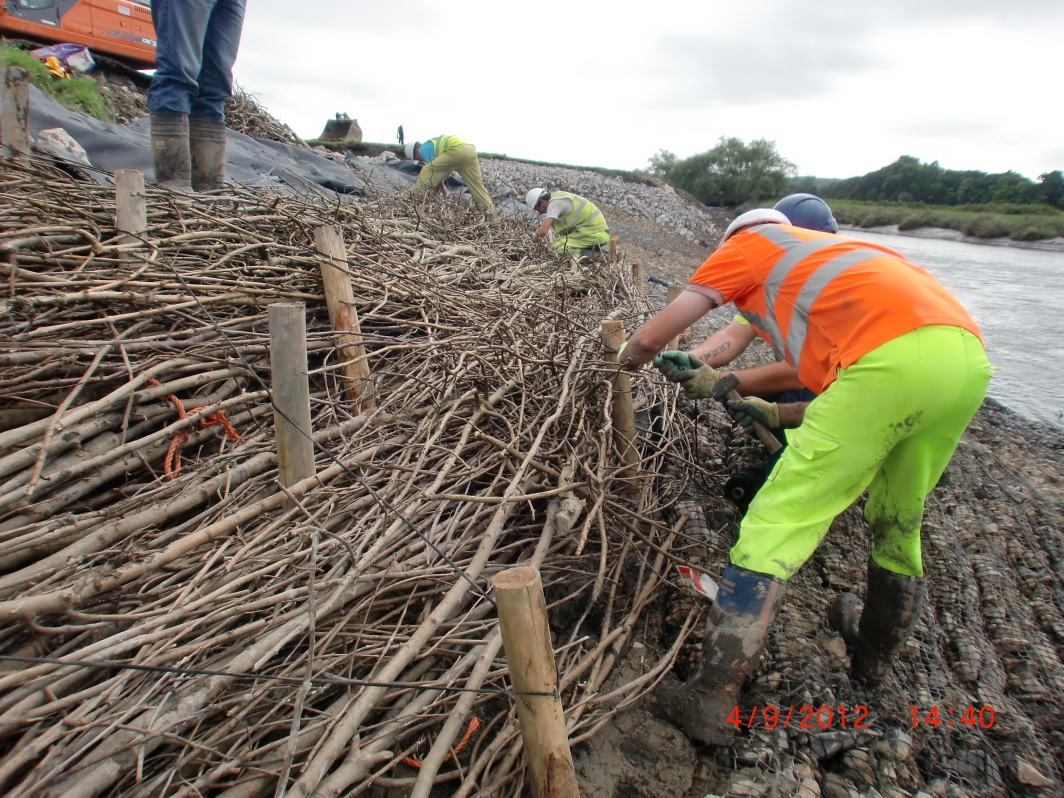



Backwaters create resting and hiding areas for fish and increase the length of natural riverbank over a short reach.
These benefits are best seen in urban rivers which tend to have been highly modified in their inter-tidal zones. A great example of this is our River Roding Backwater Scheme.

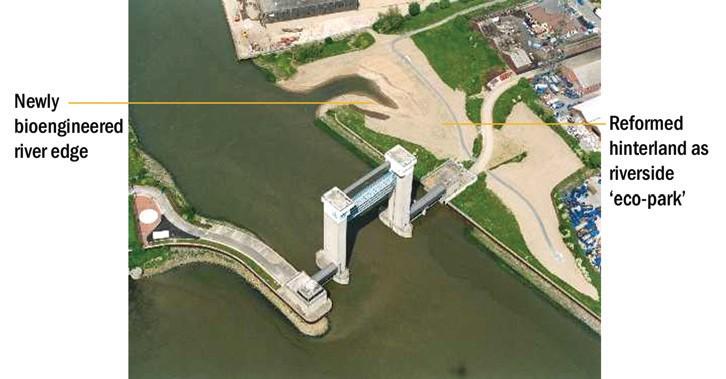
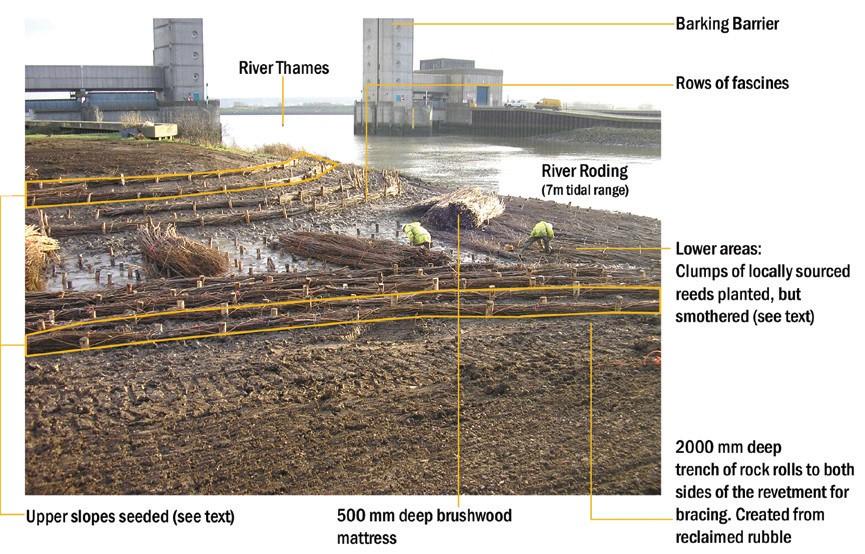

Riverbank “De-Engineering”: River Roding
Opportunities do occur, often as part of larger capital or development projects, where existing engineered riverbanks can be removed and a softer bioengineered bank can be installed to recreate a natural riverbank.




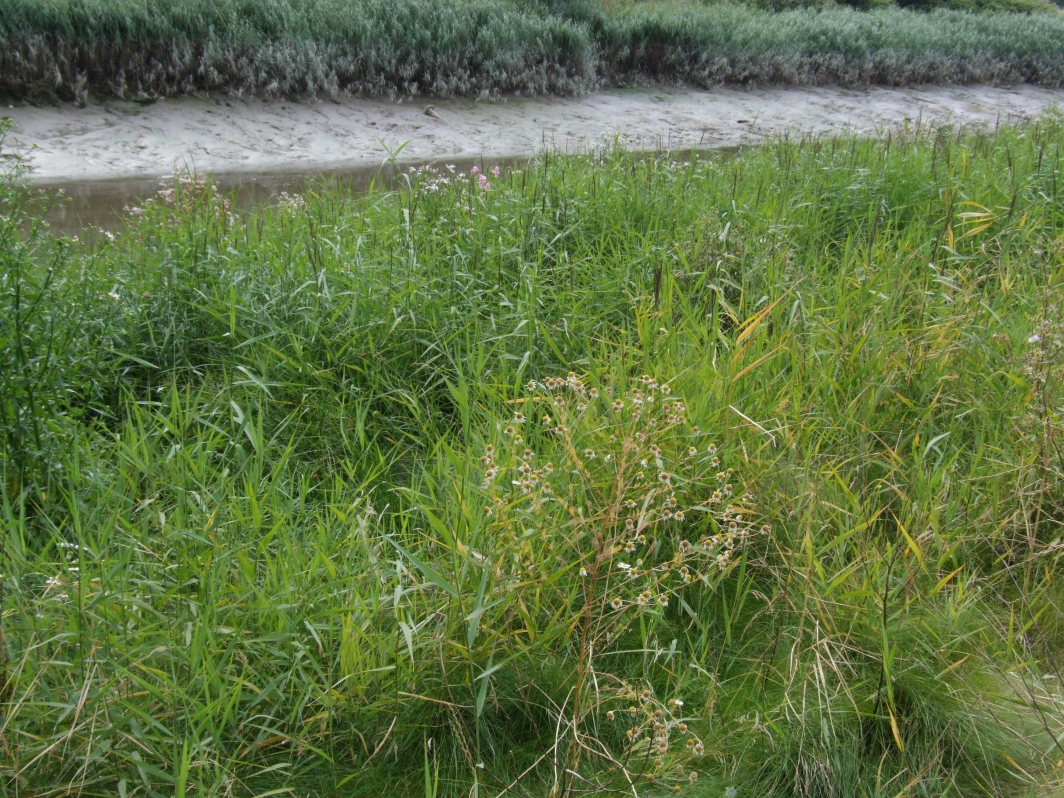
Habitat Creation: Inter-Tidal Terraces
Inter-tidal terraces create an extensive soft edged riverbank in only a short reach of river, therefore maximising the potential habitat gains and greatly improving the visual amenity of the riverbank.
Fish and invertebrates use such terraces for shelter, for food and to spawn in the marginal vegetation.
Careful design is needed to ensure terraces function long term and factors such as slope gradient, substrates, erosive forces, plant species and construction timing are critical to the success of such schemes.

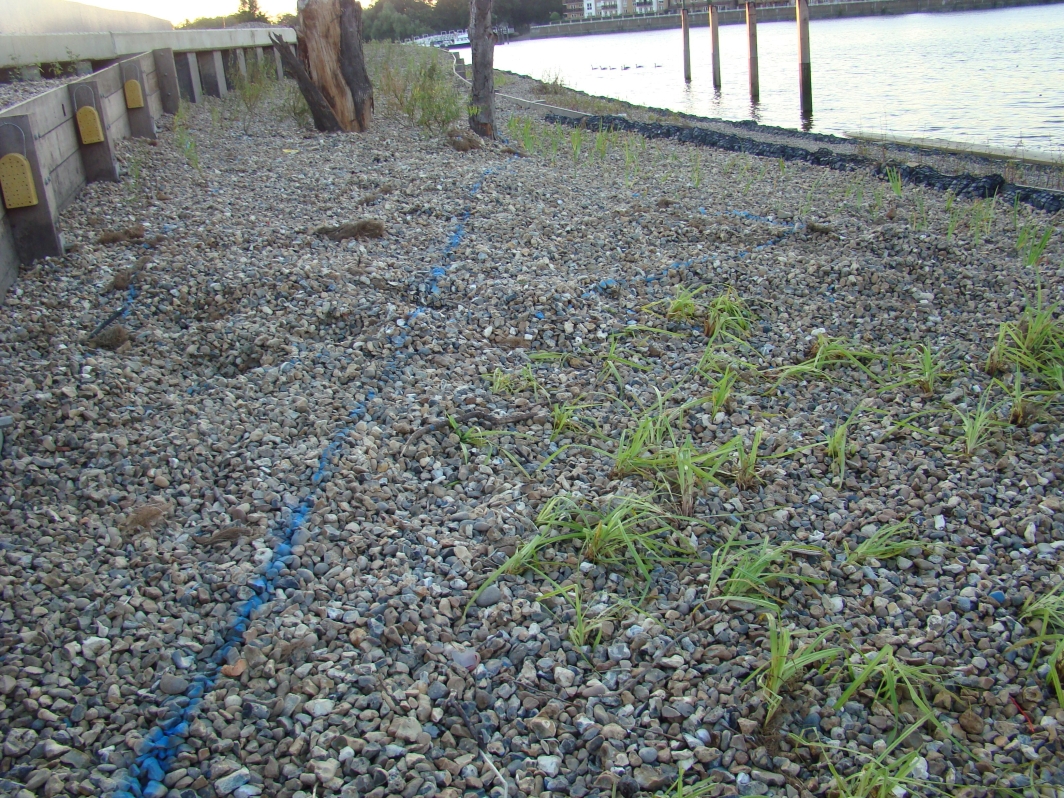


Salix have Co Authored a guidance manual for best practice approaches to Managing Inter-Tidal Rivers.
Replacing concrete riverbanks with natural habitats is what the Estuary Edges project is about. The Estuary Edges Guidance document is a ‘how to’ guide on ecological design for soft natural riverbank edges to encourage wildlife on the Thames. In the Thames Estuary only around 2% of the tidal banks are natural.
Increasing natural riverbanks will have a significant positive ecological impact on the river and will help restore fish stocks.
Contact Salix for a CD copy:
Croxton Park,
Croxton,
Thetford,
Norfolk IP24 lLS
